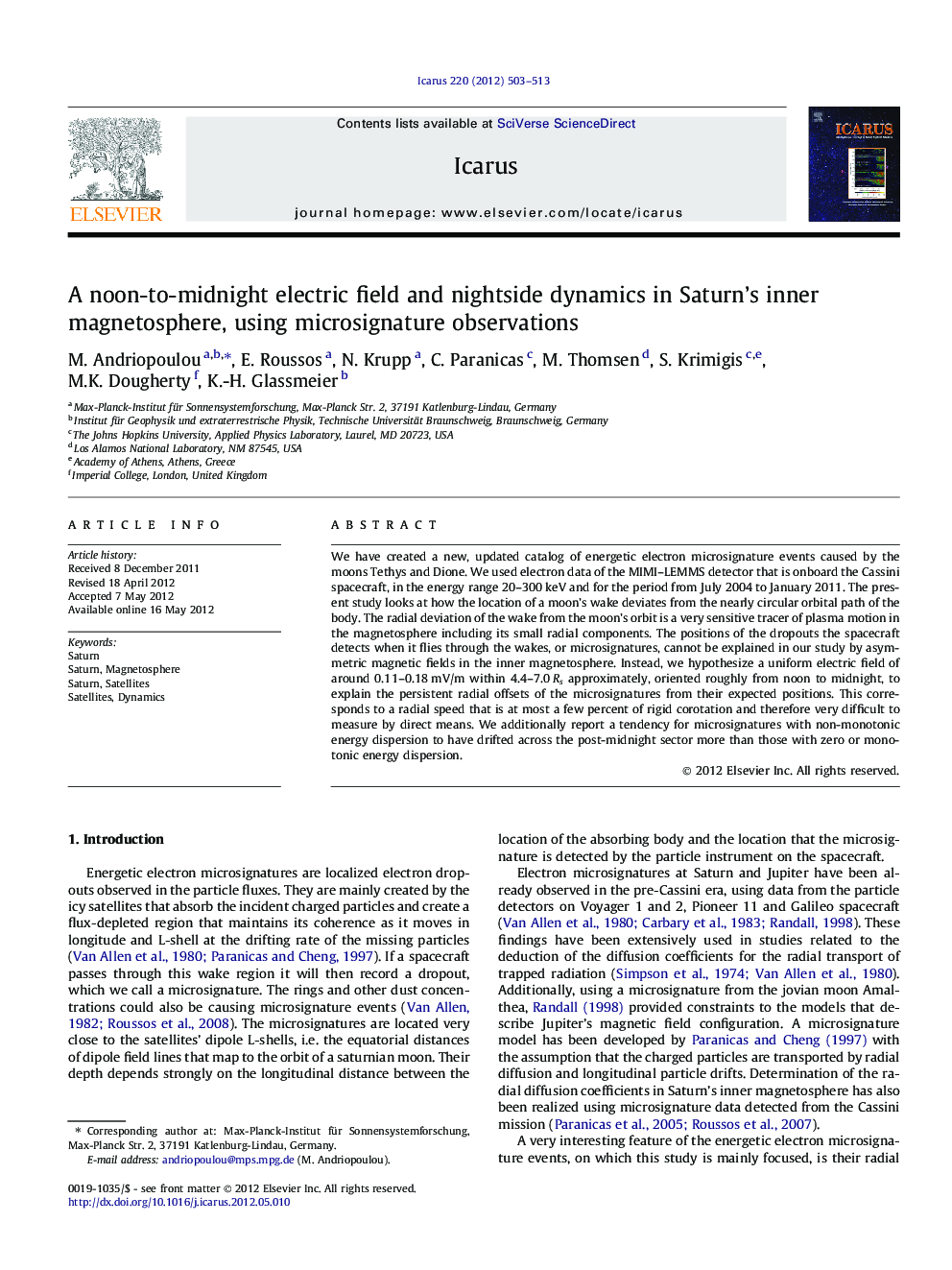| Article ID | Journal | Published Year | Pages | File Type |
|---|---|---|---|---|
| 1773424 | Icarus | 2012 | 11 Pages |
We have created a new, updated catalog of energetic electron microsignature events caused by the moons Tethys and Dione. We used electron data of the MIMI–LEMMS detector that is onboard the Cassini spacecraft, in the energy range 20–300 keV and for the period from July 2004 to January 2011. The present study looks at how the location of a moon’s wake deviates from the nearly circular orbital path of the body. The radial deviation of the wake from the moon’s orbit is a very sensitive tracer of plasma motion in the magnetosphere including its small radial components. The positions of the dropouts the spacecraft detects when it flies through the wakes, or microsignatures, cannot be explained in our study by asymmetric magnetic fields in the inner magnetosphere. Instead, we hypothesize a uniform electric field of around 0.11–0.18 mV/m within 4.4–7.0 Rs approximately, oriented roughly from noon to midnight, to explain the persistent radial offsets of the microsignatures from their expected positions. This corresponds to a radial speed that is at most a few percent of rigid corotation and therefore very difficult to measure by direct means. We additionally report a tendency for microsignatures with non-monotonic energy dispersion to have drifted across the post-midnight sector more than those with zero or monotonic energy dispersion.
► We report systematic asymmetries of the microsignature displacements in local time. ► Magnetic field asymmetries cannot explain the observed microsignature displacements. ► We require a uniform noon-to-midnight electric field with strength of up to 1.0 mV/m ► We estimate dusk-to-dawn velocities of a few km/s around the region of interest.
